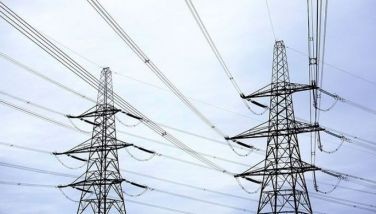$3-B Malampaya-Brunei gas pipeline mulled
April 1, 2005 | 12:00am
The Philippines is eyeing the establishment of a gas pipeline from Malampaya in Palawan to Brunei Darussalam as part of the Trans-Asean Gas Pipeline (TAGP) project, a senior official of the Philippine National Oil Co. (PNOC) said yesterday.
PNOC vice president Roland Rodriguez told reporters that the proposed Palawan to Brunei pipeline would cover about 1,000 kilometers. The Malampaya gas pipeline from Palawan to Batangas stretches about 500 kilometers.
He said the proposed pipeline could cost at least $3 billion since the Malampaya pipeline project alone costs about $1.5 billion.
"The price could be on the high side. It’s a long term plan. Bottomline is, it should also be profitable. But I’m sure 10 years from now, gas usage in the Philippines will be in that degree that we will be importing gas from our neighboring countries," Rodriguez said.
The TAGP, initiated by the Asean Council on Petroleum (ASCOPE), aims to connect Asean countries via a natural gas pipeline.
"It’s good but very expensive, but the Asean countries have decided that anytime they are in the position financially to contribute their share, they will," Rodriguez said.
There are already gas pipeline connections within Asean. Thailand is already connected to Laos while Indonesia is also linked to Singapore. "It’s easier for them to connect because they are near each other. The Philippines is a lot farther," Rodriguez said.
For his part, PNOC president Eduardo Manalac said Asean countries now feel the "urgency" to put up the TAGP to ensure security of supply amid rising global oil prices.
"My sense is that most Asean countries also sense that there is a need for security of supply," he said.
Manalac added that Asean countries are still considering stockpiling options in hopes of ensuring adequate supply and subsequently lower the price of petroleum products. "Asean countries have accepted the fact that we are to dependent on Middle East oil.
Stockpiling will ensure "distressed" countries or countries suffering from below 20 percent of its normal consumption level of immediately supply from neighboring Asean countries.
Rodriguez clarified that Asean countries are not too enthusiastic of a regional stockpiling facility. He said two to three countries are now bonding together to put up their respective stockpiles.
This year, from Nov. 30 to Dec. 30, the Philippines will host the eight Ascope Conference and Exhibition. Ascope member countries are also expected to tackle updates on the TAGP and regional stockpiling options.
PNOC vice president Roland Rodriguez told reporters that the proposed Palawan to Brunei pipeline would cover about 1,000 kilometers. The Malampaya gas pipeline from Palawan to Batangas stretches about 500 kilometers.
He said the proposed pipeline could cost at least $3 billion since the Malampaya pipeline project alone costs about $1.5 billion.
"The price could be on the high side. It’s a long term plan. Bottomline is, it should also be profitable. But I’m sure 10 years from now, gas usage in the Philippines will be in that degree that we will be importing gas from our neighboring countries," Rodriguez said.
The TAGP, initiated by the Asean Council on Petroleum (ASCOPE), aims to connect Asean countries via a natural gas pipeline.
"It’s good but very expensive, but the Asean countries have decided that anytime they are in the position financially to contribute their share, they will," Rodriguez said.
There are already gas pipeline connections within Asean. Thailand is already connected to Laos while Indonesia is also linked to Singapore. "It’s easier for them to connect because they are near each other. The Philippines is a lot farther," Rodriguez said.
For his part, PNOC president Eduardo Manalac said Asean countries now feel the "urgency" to put up the TAGP to ensure security of supply amid rising global oil prices.
"My sense is that most Asean countries also sense that there is a need for security of supply," he said.
Manalac added that Asean countries are still considering stockpiling options in hopes of ensuring adequate supply and subsequently lower the price of petroleum products. "Asean countries have accepted the fact that we are to dependent on Middle East oil.
Stockpiling will ensure "distressed" countries or countries suffering from below 20 percent of its normal consumption level of immediately supply from neighboring Asean countries.
Rodriguez clarified that Asean countries are not too enthusiastic of a regional stockpiling facility. He said two to three countries are now bonding together to put up their respective stockpiles.
This year, from Nov. 30 to Dec. 30, the Philippines will host the eight Ascope Conference and Exhibition. Ascope member countries are also expected to tackle updates on the TAGP and regional stockpiling options.
BrandSpace Articles
<
>
- Latest
- Trending
Trending
Latest
Trending
Latest
Recommended






























